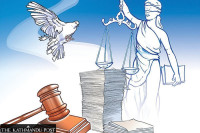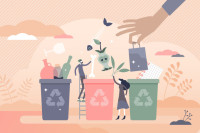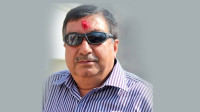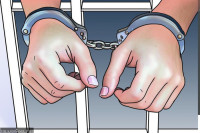National
Suggestion to close educational institutions worries students, operators
After nine months of closure, most schools and colleges had started conducting in-person classes from January.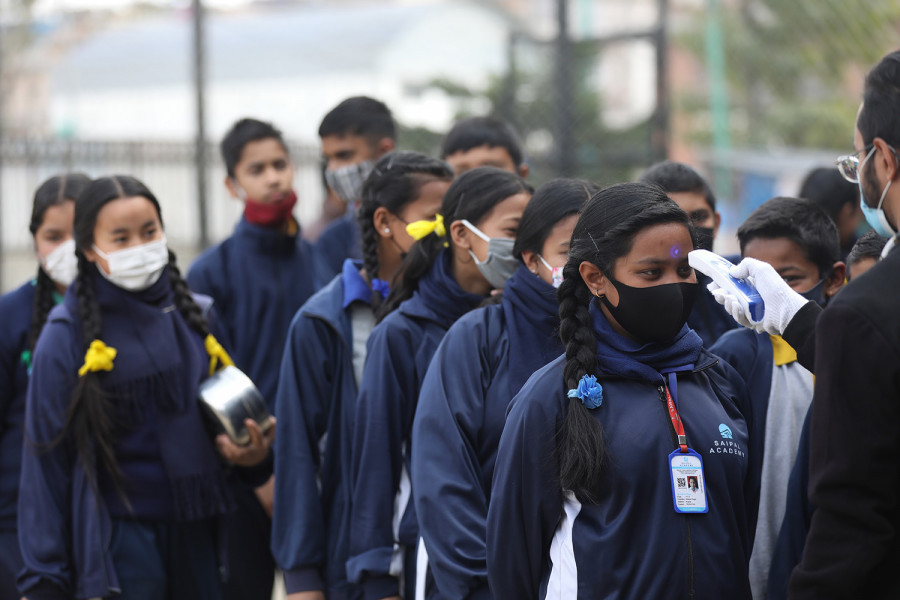
Shuvam Dhungana
After the Ministry of Health and Population during Saturday’s meeting recommended that the Covid-19 Crisis Management Centre close educational institutions for at least three weeks, institutions as well as students are now in fear that this could lead to the loss of yet another academic session.
Ranjeet Ghimire, a BA second year student in Kathmandu, fears that his exam could get cancelled again. “After almost a year of closure, finally the exam was scheduled to begin from April 18 this year. However, now I have no idea whether the exam will continue on the same date or not if the government again closes all the education institutions,” said 21-year-old Ghimire.
“As the Tribhuvan University didn’t conduct the exams online, I have already lost a year and I don't want to sit back at home again waiting for my exams.”
After remaining closed for almost nine months due to the Covid-19 pandemic, the educational institutions across the country had started conducting in-person classes from the second week of January.
To conclude the academic session on time, the government had, in September last year, reduced the prescribed study hours and curriculum at the school level for the current session by around 30 percent.
Also, the government had decided to extend the ongoing academic session by two months as completing the academic session within the given time looked impossible. The academic session used to end in April, but it has been extended till June.
Over 7 million students study in around 30,000 private and public schools across the country.
However, according to school authorities, they are on a tight schedule now and if the government closes the schools again, it would be impossible to complete the curriculum within the remaining time.
According to Ghanendra Bhattarai, principal at Shree Vidya Aarjan English Secondary School, Kathmandu, they had to revise the courses after the schools were reopened physically because many students, especially those who had gone to their home villages, missed online classes in the lack of the internet.
“Despite reducing curriculum and extending academic sessions, we are still behind schedule as 30 percent courses are yet to be completed. If the schools are closed again, it would be almost impossible to complete the course,” Bhattarai told the Post.
The Ministry of Health had, however, said that it recommended the closure of schools only in densely populated areas like the Kathmandu valley, Pokhara and Parsa district among others in light of the rising Covid-19 cases among schoolchildren and their family members.
“We are allowing the local governments concerned to decide on the matter as the effect of the pandemic is not uniform across the country,” Deepak Sharma, spokesperson for the Ministry of Education, told the Post on Saturday.
Nepal has so far reported 280,524 cases of coronavirus infections, with 3,053 deaths.
The Health Ministry said on Monday that 559 people were infected and 13 died in the last 24 hours.
Private and Boarding Schools’ Organisation Nepal (PABSON), reacting to the government recommendation, issued a statement on Sunday urging the government not to close schools under the pretext of the pandemic.
The umbrella organisation of private and boarding schools stated that completely closing the educational institutions is not a permanent solution and called for continuing in-person classes by taking adequate precautions.
“We on April 1 had already instructed all the private schools to take necessary precautions and strictly follow the government rules to avoid possible transmissions,” read the statement.
The organisation has also suggested that it would be appropriate to run classes in coordination with the bodies concerned by managing hot water, health workers, sanitisers, isolation rooms and physical distance, among other safety measures.
PABSON has also urged parents to ensure all safety measures and help protect their children from infections through the use of proper masks, sanitisers, healthy eating and observing physical and social distance.




 7.12°C Kathmandu
7.12°C Kathmandu
